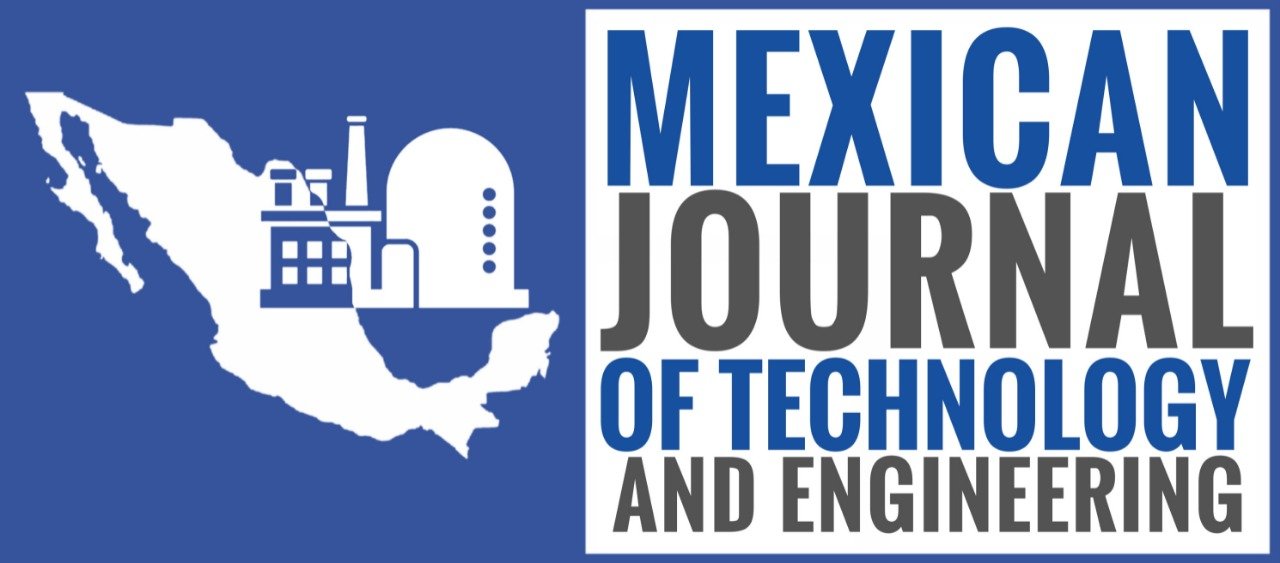BIOTRANSFORMATION OF THE ORGANIC FRACTION OF MUNICIPAL SOLID WASTES TO BIOETHANOL
BIOTRANSFORMACIÓN DE LA FRACCIÓN ORGÁNICA DE LOS RESIDUOS SÓLIDOS URBANOS A BIOETANOL
Autor(es): G. Chávez-Escalante, F. Méndez González, B.H. Espinosa-Ramírez y R. Estrada-Martínez
Fuente: Mexican Journal of Technology and Engineering, Vol. 1, No. 1, pp. 9-14.
DOI: https://doi.org/10.61767/mjte.001.1.0914
Abstract
Poor management of municipal solids wastes is leading to pollution of the oceans, causing flooding, transmitting diseases, and affecting flora and fauna worldwide. Of municipal solids wastes, 52% represent organic fraction, which, due to their carbohydrate content are likely to be used for the generation of bioethanol by liquid or solid fermentation. For this, various process configurations have been developed, which include studies of strain selection, substrate pre-treatment, and type of bioreactor. With this, bioethanol production yields from 30 to 100 g/L were obtained from different organic wastes. However, it is necessary to optimize operating conditions to ensure a profitable process at the industrial level.
Keywords: Bioethanol, solid-state fermentation, submerged fermentation, organic wastes, biotransformation.
Resumen
La mala gestión de los residuos sólidos urbanos está produciendo la contaminación de los océanos, causando inundaciones, transmitiendo enfermedades y afectando a la flora y fauna a nivel mundial. De los residuos sólidos urbanos, el 52% representan los residuos orgánicos; los cuales, por su contenido de carbohidratos sus susceptibles de utilizarse para la generación de bioetanol por fermentación líquida o sólida. Para ello, diversas configuraciones de proceso han sido desarrolladas; las cuales, incluyen estudios de selección de cepa, pretratamiento del sustrato y tipo de biorreactor. Con ello, se han obtenido rendimientos de producción de 30 a 100 g/L de bioetanol a partir de diferentes residuos orgánicos. Sin embargo, es necesario optimizar condiciones de operación para garantizar un proceso rentable a nivel industrial.
Palabras clave: Bioetanol, fermentación en estado sólido, fermentación líquida, residuos orgánicos, biotrasformación.
Referencias
Cortinas de Nava, C. (2006). Bases para Legislar la Prevención y Gestión Integral de Residuos. Semarnat. México. 1a Ed.
Tang, Y., Koike, Y., Liu, K., An, M., Morimura, S., Wu, X. y Kida, K. (2008). Ethanol production from kitchen waste using the flocculating yeast Saccharomyces cerevisiae strain KF-7. Biomass Bioenerg 32, 1037-1045.
Wang, Q., Ma, H., Xu, W., Gong, L., Zhang, W. y Zou, D. (2008). Ethanol production from kitchen garbage using response surface methodology. Biochem Eng J 39(3) 604-610.
Uncu, O.N. y Cekmecelioglu, D. (2011). Cost-effective approach to ethanol production and optimization by response surface methodology. Waste Manage 31(4), 636-643.
Atencio Pérez, R. M., Guevara-García, J. A., Reyes-López, J. A. Evaluación de riesgo ambiental en un tiradero con quema de basura. Rev. Int. de Contam. Ambie. 2013; 29(3):107-117.
Zhang, Y., Yue, D., Liu, J., He, L. y Nie, Y. (2012a). Effect of organic compositions o aerobically pretreated municipal solid waste on non-methane organic compound emissions during anaerobic degradation. Waste Manage 32, 1116-1121.
Escamilla-Alvarado, C., Ríos-Leal, E., Ponce-Noyola, M.T. y Poggi-Varaldo, H.M. (2012). Gas biofuels from solid substrate hydrogenogenic-methanogenic fermentation of the organic fraction of municipal solid waste. Process Biochem. 4, 1572-1587.
Saucedo-Castañeda, G., Lonsane, B. K., Navarro, J. M., Roussos, S. and Raimbault, M. (1992). Potential of using a single fermenter for biomass build-up, starch hydrolysis, and ethanol production. Appl Biochem Biotechnol. 36, 47-61.
Ballesteros, M., Saez, F., Ballesteros, I., Manzanares, P., Negro, M.J., Martinez, J.M., Castaneda, R. y Dominguez, J.M. (2010). Ethanol production from the organic fraction obtained after thermal pretreatment of municipal solid waste. Appl Biochem Biotechnol 161, 423–431.
Boluda-Aguilar, M. and López-Gómez, A. (2013). Production of bioethanol by fermentation of lemon (Citrus limón L.) peel wastes pretreated with steam explosion. Ind Crop Prod. 41, 188-197.
Mazaheri, D., Shojaosadati, S. A., Hejazi, P. and Mousavi, S. M. (2015). Bioethanol production performance in a packed bed solid-state fermenter: evaluation of operational factors and intermittent aeration strategies. Ann Microbiol. 65, 351-357.
Uçkun-Kiran, E. y Liu, Y. (2015). Bioethanol production from mixed food waste by and effective enzymatic pre-treatment. Fuel 159, 463–469.
Canabarro, N.I., Alessio, C., Foletto, E.L., Kuhn, R.C., Priamo, W.L. y Mazutti, M.A. (2017). Ethanol production by solid-state saccharification and fermentation in a packed-bed bioreactor. Renew Energ 102, 9-14.
Uçkun Kiran, E., Trzcinski, A.P., Ng, W.J. y Liu, Y. (2014). Bioconversion of food waste to energy: A review. Fuel 134, 389-399.
Estrada-Martínez, R., Favela-Torres, E., Soto-Cruz, N. O. Escalona-Buendía, H. B. and Saucedo-Castañeda, G. A Mild Thermal Pre-treatment of the Organic Fraction of Municipal Wastes Allows High Ethanol Production by Direct Solid-state Fermentation. Biotechnol Bioproc E. 2019. 24: 401–412.
Demirbas, A. (2005). Bioethanol from cellulosic materials: a renewable motor fuel from biomass. Energ Source 27, 327-333.
Kumar, P., Barrett, D.M., Delwiche, M.J. y Stroeve, P. (2009). Methods for pretreatment of lignocellulosic biomass for efficient hydrolysis and biofuel production. Ind Eng Chem Res 48, 3713-3729.
Ulbricht, R.J., Northup, S.J. y Thomas, J.A. (1984). A review of 5-hydroxymethylfurfural (HMF) in parenteral solutions. Fund Appl Toxicol 4, 843-853.
Zhi-Min, Z., Lan, W. y Hong-Zhang, C. (2015). A novel steam explosion sterilization improving solid-state fermentation performance. Bioresour Technol 192, 547-555.
Kim, J.K., Oh, B.R., Shin, H.J., Eom, C.Y., Kim, S.W. (2008). Statistical optimization of enzymatic saccharification and ethanol fermentation using food waste. Process Biochem 43, 1308-1312.
